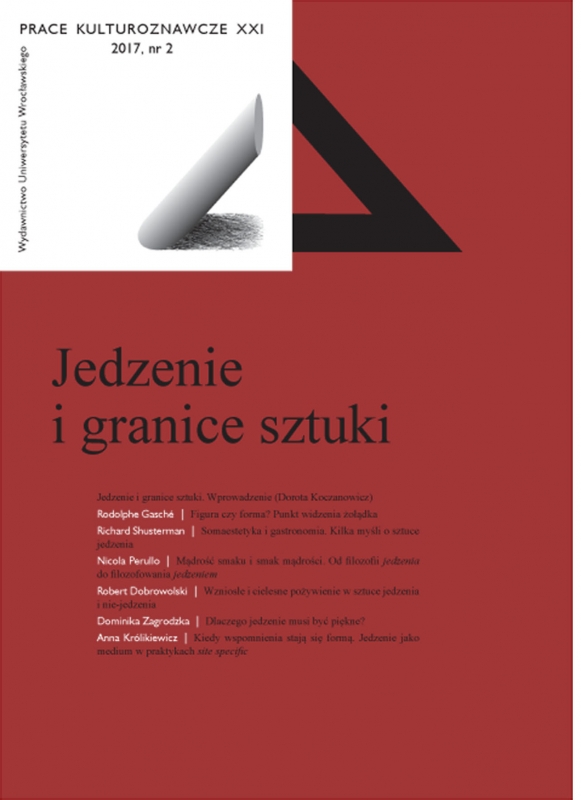

Artykuły

Dlaczego jedzenie musi być piękne?
W artykule omawiam problem estetyzacji jedzenia. Analizuję dwudziestojednowieczne manifesty napisane przez szefów kuchni, takie jak Open Letter to the Chefs of Tomorrow i Statement on the ʻnew cookeryʼ. Szczególnie interesuje mnie język, jakiego używają, mówiąc o jedzeniu i gotowaniu. Często jest on podobny do języka używanego do opisu sztuki i procesu twórczego. Przykładowo, jednym z najpopularniejszych terminów jest termin „interpretacja”, dotyczący zarówno działań kucharzy, jak i jedzących. Podkreśla się, że akt jedzenia powinien być całościowym doświadczeniem i dostarczać emocji zarezerwowanych dla sztuki. Czy rzeczywiście możemy mówić o podobieństwie jedzenia do dzieła sztuki i gotowania do tworzenia? Odwołując się między innymi do rezultatów wstępnych badań, jakie prowadziłam, chcę pokazać, jak koncepcja estetyzacji codzienności Wolfganga Welscha koresponduje z ideą Georga Simmla o estetycznej sile wspólnego stołu. Okazuje się, że chodzi nie tylko o podawanie pięknych dań. Aby osiągnąć satysfakcję estetyczną z posiłku, szczególnie ważne jest, z kim i w jakim otoczeniu jemy. Wspólnota jest czymś nadbudowanym nad jednostkową satysfakcją. Roland Barthes zaznaczał także, że reguły i zakazy obowiązujące podczas jedzenia zostały stworzone, aby ukryć erotyczny, indywidualny aspekt jedzenia.
Why food must be beautiful?
In my article I discuss the problem of the anesthetization of food. I analyzed the 21st century manifestos written by the chefs, including Open Letter to the Chefs of Tomorrow and Statement on the »new cookery«. I am particularly interested in the language they use talking about food and cooking. It is often similar to the language which is used to describe the work of art and the creative process. For example, the most popular term is ‘interpretation’ concerning the activities of cooks and eaters. It is emphasized that the act of eating is supposed to be holistic experience and should provide feelings reserved for art. But how much can you actually talk about the similarity of food to the pieces of art and about the similarity of cooking to creating something? Referring to the results of the preliminary research that I conducted, I want to show how to combine Wolfgang Welsch’s concepts about everyday aesthetisation and Georg Simmel’s ideas about the aesthetic power of a community table. It turns out that it is not just about to serve beautiful plates. To be satisfied with the meal it is also important who we eat with and in what setting. The community is something appearing over the individual satisfaction. Roland Barthes admitted that the rules and prohibitions are designed also to cover the erotic aspects of feasting.